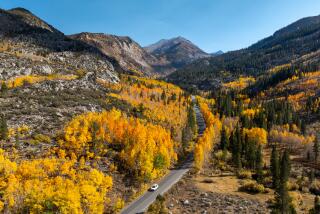Red fir
- Share via
[ ABIES MAGNIFICA ]
Of California’s seven fir species, the mighty red is the most magnificent. With some rising more than 200 feet, with a girth of 10 feet, red firs form somber stands dark with shade in the high mountain slopes from the southern Sierra Nevada to the Oregon line. Viewed from above at summer’s end, treetops are thick with the weight of erect cones. At 9 inches long, these purplish-brown cones dwarf the other firs’ cones. Instead of plummeting to the ground, fir cones disintegrate in late autumn with a vigor that one researcher describes as “violent.” Falling apart, scale by scale, the cones toss their seeds to the mountain winds, a phenomenon that John Muir noted, writing that the seeds “mottle the air like flocks of butterflies” as they drift on lustrous rose-colored wings.
NATURAL HISTORY
One of the distinctive trees of the upper-elevation snow zone, the red fir grows best in deepest snow. It mixes with lodgepole pine, mountain hemlock and white fir, but it is often found in majestic pure stands. These forests house Cassin’s finches, mountain chickadees, Douglas squirrels and other animals that relish conifer seeds.
KEY CHARACTERISTICS
Red fir needles grow singly (versus in groups on pines) and are cylindrical enough to roll between the fingers. Young needles have a sheen that earned them the nickname “silvertip firs.” The bark on large red firs blushes to the hue of a Cabernet when small pieces are broken off.


